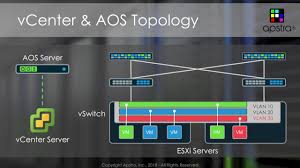Menlo Park, US: Apstra Inc., the pioneer of Intent-Based Networking (IBN) has announced an integration and demonstration between the company’s Apstra Operating System (AOS) and VMware’s vSphere to provide greater visibility across VMware vCenter Server customers’ network and virtual machine (VM) infrastructure.
AOS’ vSphere integration augments, in real time, Apstra AOS’s graph-based distributed state repository with granular workload information. This integration enables relationships between workloads, applications, tenants, virtual networks, the physical topology, and specific elements such as interfaces, CPUs, and links to all co-exist in the same graph representation.
As a result, it provides a unique ability to correlate virtual, physical, and workload state, providing unmatched visibility in how infrastructure issues affect applications. AOS can raise alerts when anomalies are detected that pertain to specific workloads or applications, such as Layer 2 connectivity issues across different racks, incorrectly configured network switch interfaces, and detection of a packet drop in the physical network and correlating it to application components in the virtual network, specific workloads, applications, or tenants.
“When deployed in a modern leaf-spine data center network, AOS enables clear visibility between silos, and accelerates and simplifies troubleshooting with a fully automated L3 underlay and L2 overlay, for greenfield and brownfield PODs,” said Michael Wood, CMO – Apstra.

“AOS provides a single point of control for Cisco, Arista, Dell EMC, Mellanox, white box and brite box switches running Cumulus, OpenSwitch and SONiC switch operating systems. By adding VMware vSphere integration, AOS puts network engineers in the driver’s seat, providing them with an unmatched ability to answer questions about whether the network is affecting application performance, and a unique ability to troubleshoot networking issues when they arise. With every release, AOS is coming closer to the vision of a self-operating network that empowers operators and accelerates organizations’ ability to deploy their digital initiatives, IoT and 5G,” added Wood.
Apstra connects AOS to a vCenter Server via VMware APIs and continuously receives information about each virtual machine’s lifecycle and configuration changes. These data augment the rich network context that AOS continuously maintains in its unique publish/subscribe graph representation with VM specific information that can be queried by network operators for forensic analysis or used by its Intent-Based Analytics (IBA) to detect anomalies.

